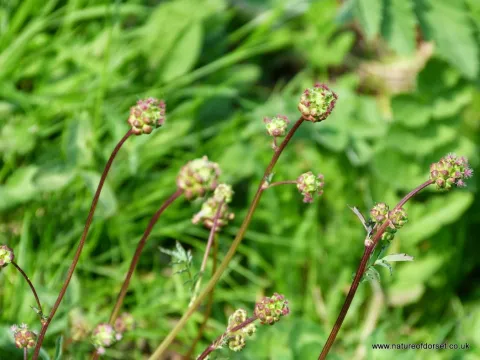In Depth
| Salad Burnet |
|---|
Title: Salad Burnet: The Delicate Herb with a Subtle BiteAmidst the abundance of culinary herbs that grace our gardens, there's one often overlooked for its quiet demeanor yet distinctive flavor—the Salad Burnet. This delicate herb, with its refreshing taste and subtle bite, has been a favorite among chefs and gardeners for centuries. Join us as we explore the world of Salad Burnet, uncovering its history, culinary uses, and the unique charm it brings to our dishes. Anatomy and Appearance: Salad Burnet, scientifically known as Sanguisorba minor, is a perennial herbaceous plant belonging to the Rosaceae family. It is characterized by its low-growing, fern-like foliage and clusters of small, globe-shaped flowers that range in color from green to reddish-purple. The leaves of Salad Burnet are deeply lobed and serrated, giving them a delicate and lacy appearance. When crushed or bruised, the leaves emit a subtle cucumber-like scent, which is a hallmark of this herb's fresh flavor. Culinary Uses: Salad Burnet is prized for its mild, cucumber-like flavor and versatility in the kitchen. The tender young leaves of Salad Burnet are often used fresh as a garnish in salads, sandwiches, and cold soups, where they add a refreshing crunch and subtle herbal aroma. Additionally, Salad Burnet leaves can be chopped and added to herb butters, cream cheese spreads, and salad dressings, infusing them with a delicate flavor reminiscent of fresh cucumbers.One of the unique characteristics of Salad Burnet is its ability to retain its flavor and texture even when exposed to heat, making it suitable for use in cooked dishes as well. The leaves can be added to cooked vegetables, pasta dishes, and omelets, where they impart a subtle herbal note without overpowering the other flavors. Historical Significance: Salad Burnet has a long history of culinary and medicinal use, dating back to ancient times. The herb was prized by the Greeks and Romans for its culinary and medicinal properties, and it was often included in salads and herbal remedies. In medieval Europe, Salad Burnet was cultivated in monastery gardens and used as a flavoring herb and medicinal tonic. Its fresh, cucumber-like flavor made it a popular choice for enhancing the taste of bland foods and refreshing the palate. Cultivation and Care: Salad Burnet is easy to grow and thrives in a variety of soil types and conditions. It prefers well-drained soil and full sun to partial shade, although it can tolerate some shade in hotter climates. Salad Burnet is drought-tolerant once established and requires minimal maintenance, making it an ideal herb for beginner gardeners. The plant can be propagated from seeds or cuttings and will readily self-seed in favorable conditions. Conclusion: In the world of culinary herbs, Salad Burnet stands out for its delicate flavor, refreshing taste, and versatile uses in the kitchen. Whether used fresh as a garnish or chopped and added to cooked dishes, this unassuming herb adds a subtle yet distinctive flavor that elevates a wide range of recipes. By embracing the unique charm of Salad Burnet and incorporating it into our culinary repertoire, we can savor the fresh flavors of summer all year round. |

